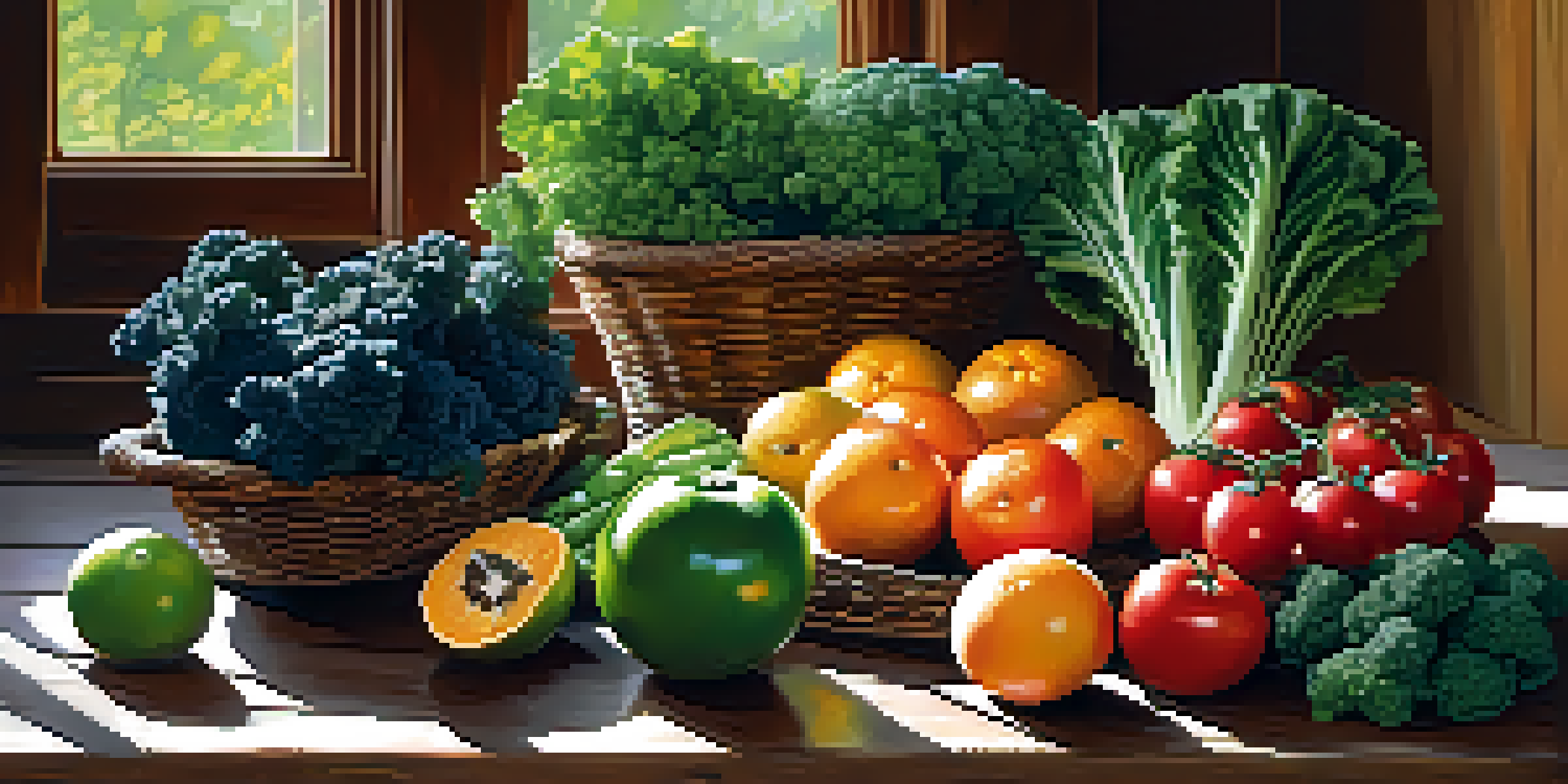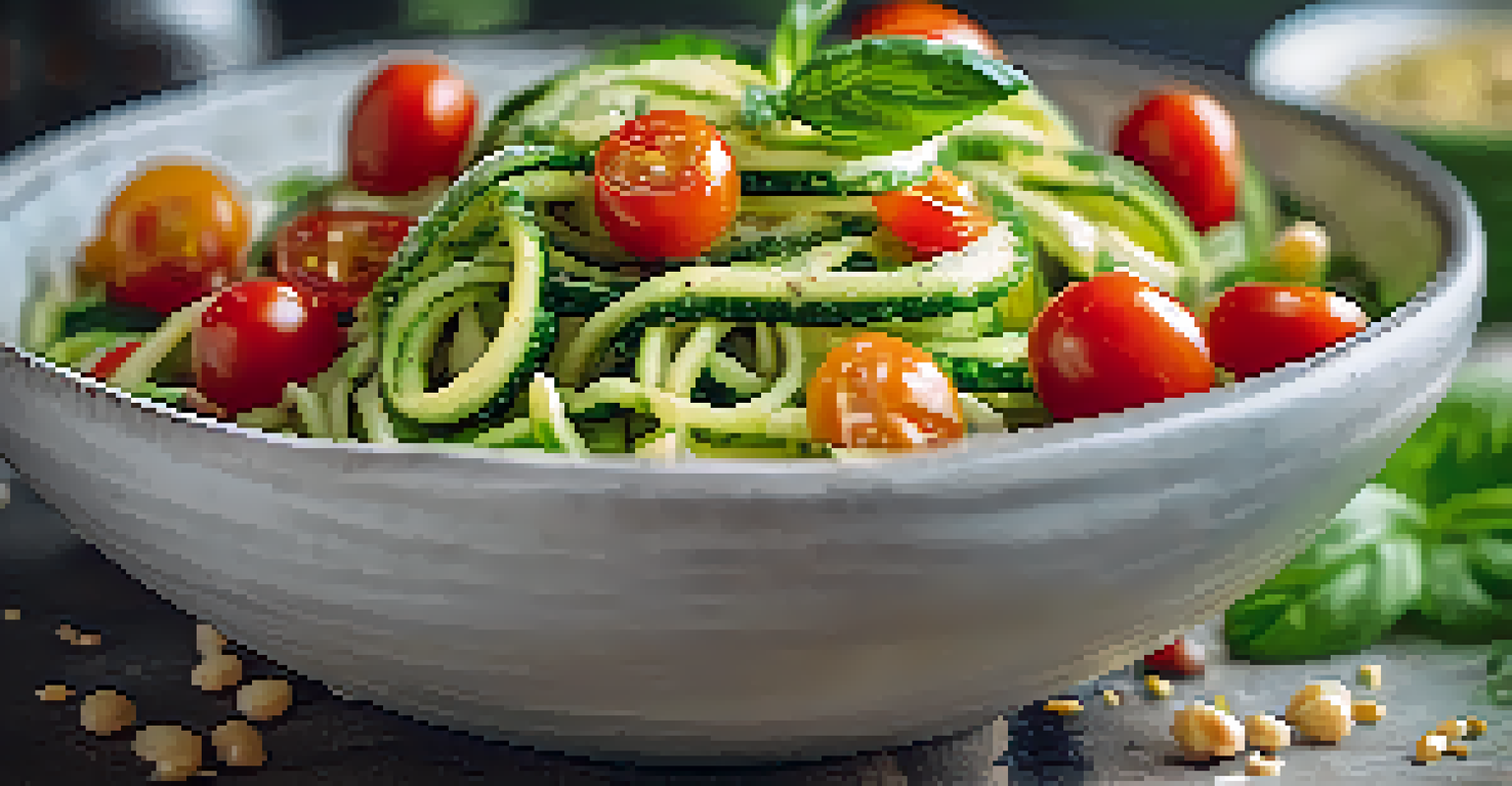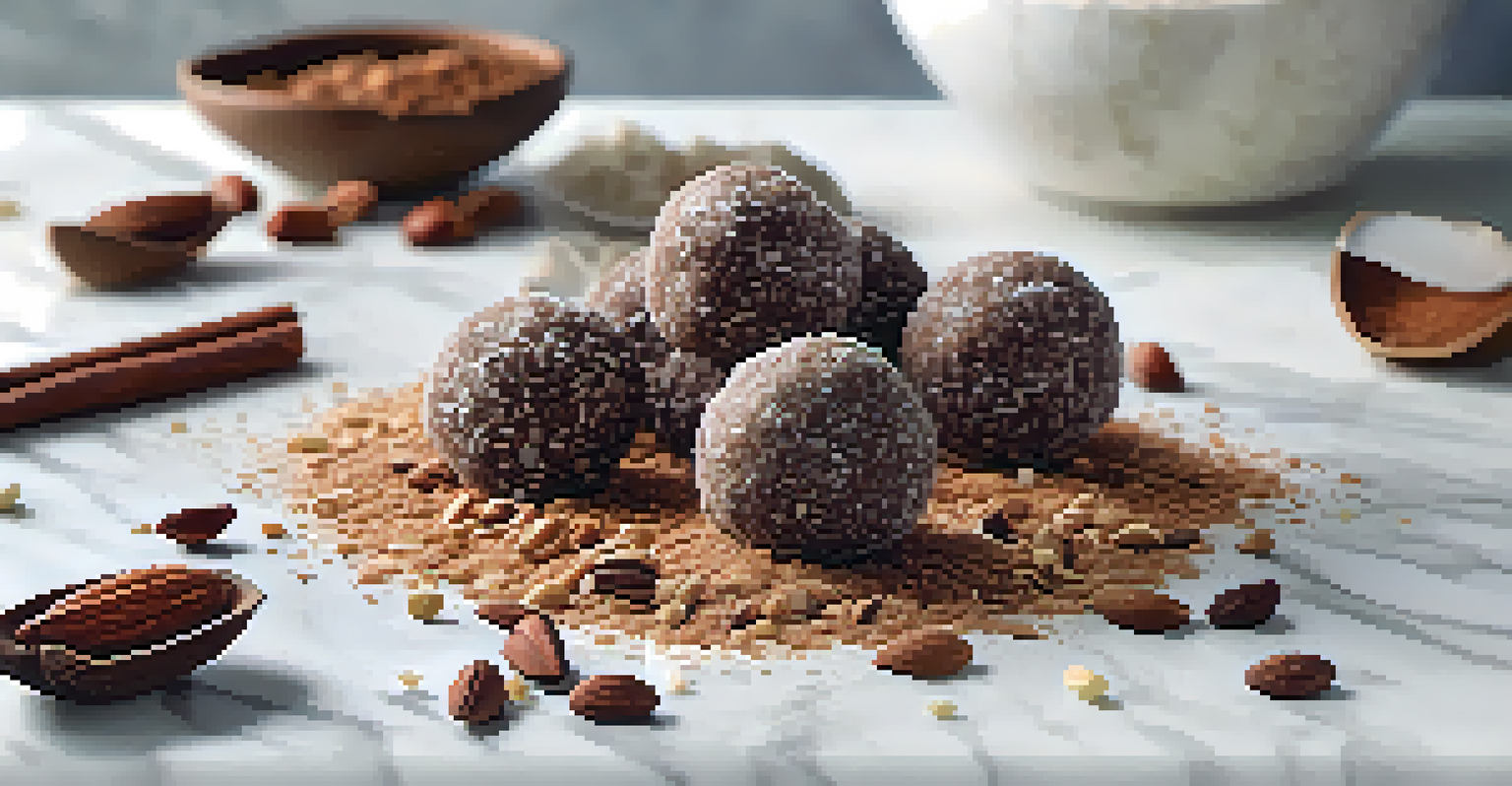Embracing the Raw Food Movement: A Culinary Art Journey

Understanding the Raw Food Movement and Its Origins
The raw food movement is more than just a dietary choice; it’s a lifestyle that emphasizes the consumption of uncooked and unprocessed foods. This movement has roots in various health philosophies, dating back to the late 19th century, when people began to realize the benefits of eating fresh produce. Advocates believe that cooking can destroy vital nutrients and enzymes, which is why they promote a diet rich in fruits, vegetables, nuts, seeds, and sprouted grains.
Let food be thy medicine and medicine be thy food.
As you delve deeper into the raw food philosophy, you'll notice that it encourages a connection to nature. Many raw food enthusiasts feel that eating foods in their natural state aligns their bodies with the rhythms of the earth. This connection often fosters a greater appreciation for the environment and the food we consume, leading to more sustainable practices.
While some may see it as a restrictive diet, many raw foodies view it as an exciting culinary adventure, exploring flavors and textures they might have overlooked in cooked foods. It's about creativity in the kitchen, and the possibilities are endless when you embrace this vibrant way of eating.
The Health Benefits of Eating Raw Foods
One of the most appealing aspects of the raw food movement is its purported health benefits. Many advocates report increased energy levels, improved digestion, and clearer skin after switching to a raw food diet. The high intake of vitamins, minerals, and antioxidants found in fresh produce contributes to these positive changes, supporting overall wellness.

Furthermore, raw foods are typically lower in calories and high in fiber, making them an excellent choice for those looking to maintain a healthy weight. The fiber content helps to keep you feeling full longer, which can prevent overeating. Additionally, many raw foodists find that their cravings for processed foods diminish as they nourish their bodies with whole, living foods.
Raw Food: A Nutrient-Rich Lifestyle
The raw food movement emphasizes uncooked, unprocessed foods to enhance nutrient intake and promote overall wellness.
However, it’s essential to approach this lifestyle with balance and awareness. While raw foods can be incredibly nutritious, it's crucial to ensure you're getting a variety of nutrients. Pairing raw foods with other healthy cooking methods can create a well-rounded diet that supports your health goals.
Key Ingredients in Raw Food Cuisine
When it comes to raw food cuisine, the ingredient list is vibrant and diverse. Fresh fruits and vegetables are the stars of the show, bursting with flavor and color. From zesty citrus fruits to leafy greens, the options are endless, allowing for creativity in every dish you prepare.
You are what you eat, so don’t be fast, cheap, easy, or fake.
Nuts and seeds also play a significant role in raw food meals, providing healthy fats, protein, and a satisfying crunch. Think of almonds, walnuts, chia seeds, and hemp seeds as your go-to pantry staples. They can be used in everything from smoothies to energy bars, adding richness and depth to your meals.
Herbs and spices are essential too, as they bring dishes to life with their aromatic qualities. Ingredients like fresh basil, cilantro, and ginger can elevate a simple salad or smoothie into an extraordinary culinary experience, proving that raw food doesn’t have to be bland or boring.
Essential Techniques for Raw Food Preparation
Preparing raw food might seem daunting at first, but with a few essential techniques under your belt, it becomes an enjoyable process. One of the foundational methods is soaking, which involves immersing nuts, seeds, or dried fruits in water to enhance their digestibility and flavor. Soaking can also help with sprouting, a technique that brings seeds to life and boosts their nutritional value.
Another crucial skill is blending, which can turn fresh fruits and vegetables into creamy smoothies or soups. A high-speed blender can be your best friend in the raw kitchen, making it easy to create delicious, nutrient-packed drinks and dressings. Don’t underestimate the power of a good food processor either; it can help you whip up everything from raw veggie burgers to nut-based cheeses.
Creative Cooking with Raw Ingredients
Raw food cuisine encourages culinary creativity, utilizing fresh fruits, vegetables, nuts, and seeds to create vibrant dishes.
Dehydrating is another fantastic method that allows you to create crunchy snacks and textures without cooking. Using a dehydrator, you can transform fruits into chewy treats or vegetables into crispy chips, providing satisfying alternatives to processed snacks while preserving their nutrients.
Creative Raw Food Recipes to Try at Home
If you’re excited to dive into the raw food movement, starting with some creative recipes can be a fun way to explore. Consider making a vibrant raw zucchini noodle salad, where spiralized zucchini stands in for traditional pasta. Toss it with a fresh pesto made from basil, garlic, and nuts for a deliciously fresh meal.
Another crowd-pleaser is a raw cacao energy ball, combining dates, nuts, and raw cacao powder for a sweet treat that’s packed with nutrients. These bites make for a perfect snack when you need a quick energy boost without the guilt of processed sugars.
Lastly, don’t forget about raw desserts! A raw cheesecake made from cashews, coconut oil, and a medley of fruits can satisfy your sweet tooth while keeping things healthy. These recipes not only taste great but also showcase the beauty and versatility of raw ingredients.
Overcoming Challenges in the Raw Food Journey
While embracing the raw food movement can be rewarding, it also comes with its challenges. One common hurdle is the perception that raw food is time-consuming and requires extensive preparation. However, with practice and a few meal prep strategies, you can streamline the process and make it more manageable.
Social situations can also pose a challenge, especially when dining out or attending gatherings. It’s helpful to communicate your dietary preferences to friends and family or even bring your own dishes to share. This way, you can enjoy meals with others without feeling deprived.
Challenges and Community Support
While adopting a raw food diet can be challenging, community support and meal prep strategies can help individuals navigate their journey.
Lastly, it’s essential to listen to your body throughout this journey. Not everyone thrives on a fully raw diet, and that’s perfectly okay. Finding a balance that works for you, whether that means incorporating some cooked foods or adjusting your raw intake, will ensure a sustainable and enjoyable experience.
The Future of the Raw Food Movement
As the years go by, the raw food movement continues to evolve and gain traction. More people are becoming aware of the health benefits associated with this lifestyle, and food trends are increasingly leaning toward plant-based and whole food diets. This shift indicates that the raw food philosophy is not just a passing fad but a movement rooted in a desire for better health.
With the rise of social media, raw food enthusiasts are sharing their culinary creations and experiences more than ever. This online community fosters creativity and innovation, encouraging individuals to experiment with raw ingredients and techniques. It’s an inspiring space where people can connect, share recipes, and support each other on their journeys.

Looking ahead, we can expect to see more raw food options in restaurants and grocery stores, catering to the growing demand for healthy, unprocessed meals. As awareness grows, so does the potential for raw food to become a mainstream choice for those seeking a flavorful and health-conscious lifestyle.